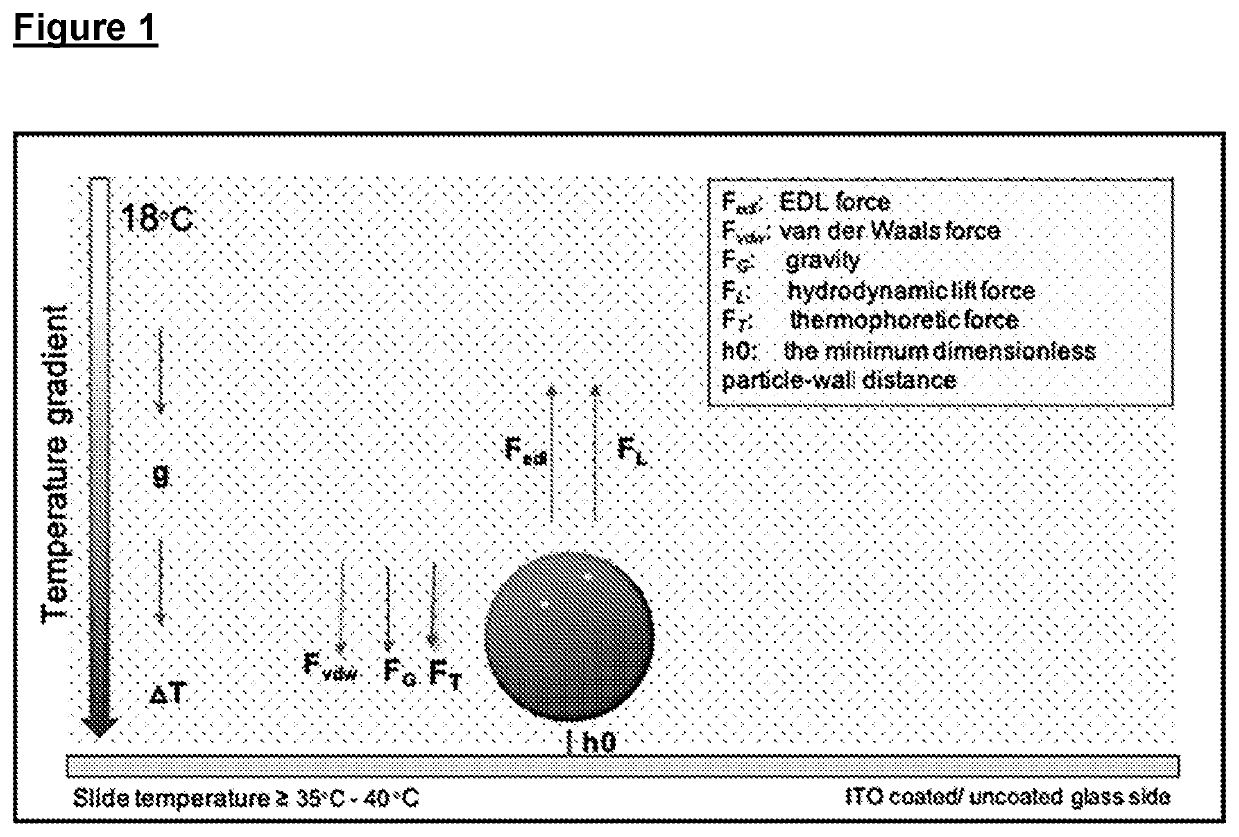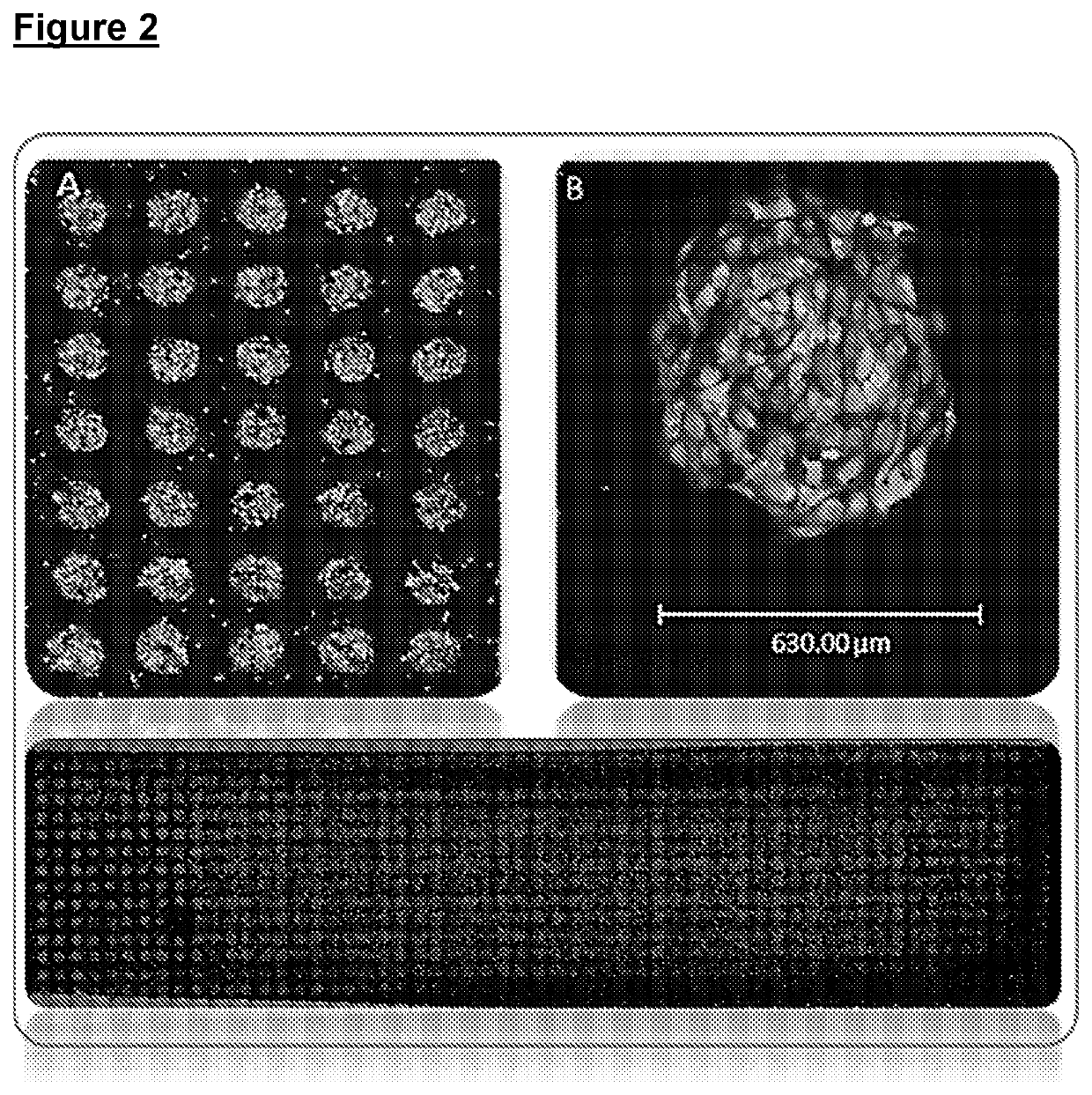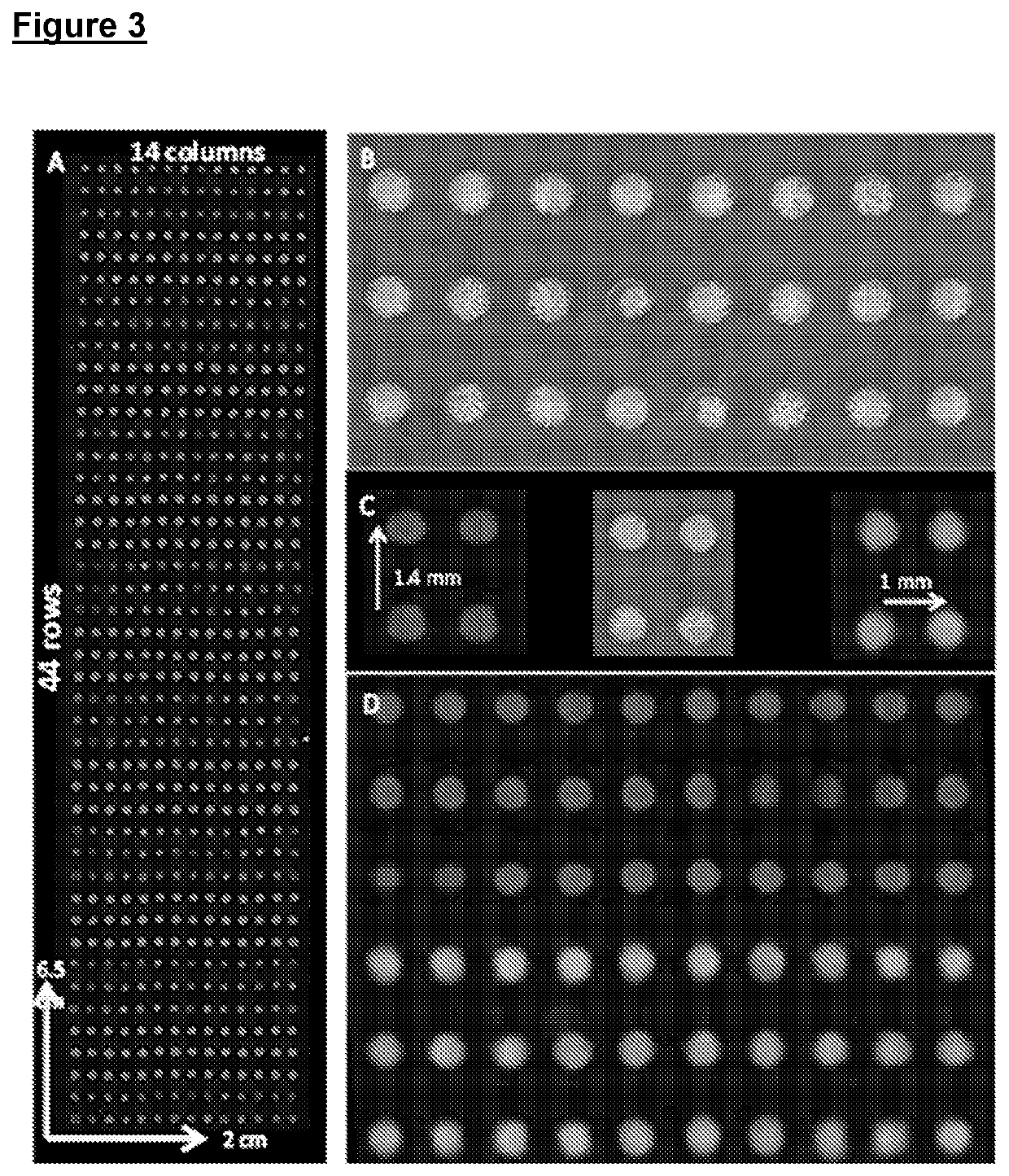Improvements relating to cell transfection
a cell transfection and cell technology, applied in the field of cell transfection improvement, can solve the problem of insufficient theories that accurately predict the depth of primary energy minima
- Summary
- Abstract
- Description
- Claims
- Application Information
AI Technical Summary
Benefits of technology
Problems solved by technology
Method used
Image
Examples
example 2
[0109]Modulation of Gene Expression with Stable siRNA in Stable Cell Lines
[0110]As a first step, the HTS-system was tested with 840 spots, where each spot was seeded with a human umbilical vein endothelial cell (HUVEC) stable cell line tagged with copGFP. This commercially available stable cell line was treated with siRNA directed against copGFP and the GFP-fluorescence signal per cell was used as a read-out for the effect of siRNA inhibition.
[0111]ITO Slides Preparation
[0112]The ITO slides were prepared as described in Example 1 in the previous section.
[0113]ITO Slides Printing
[0114]Immediately following Oxygen Plasma treatment, the ITO slides were printed with two different siRNAs. Either a non-coding siRNA (Sigma-Aldrich) labelled with red Alexafluor 648 dye as a control or a copGFP targeting siRNA (copGFP siRNA, Sigma, target sequences: CCCAAUGGGAGACAACGUU, AACGUUGUCUCCCAUUGGG). The slides were then left in a dark dissector for two days to dry.
[0115]Cell Culture
[0116]Two days af...
example 3
[0120]Modulation of Gene Expression with CRISPR-Cas9
[0121]Despite wide usage, RNAi has two major drawbacks. Firstly, the transient nature of the inhibition by RNAi allows only temporary knockdown of gene expression. Secondly, off-target effects have been reported. Consequently, we decided to evaluate the clustered, regularly interspaced, short palindromic repeat associated (CRISPR-Cas9) genome editing system using our platform. CRISPR-Cas9 is more versatile than RNAi as it can be used to induce InDels to both repress or activate gene expression and cause both heritable and non-heritable genomic changes. For these experiments we used fibroblasts isolated from lungs of CRISPR-Cas9+ / +knock-in mice obtained from the Jacksons laboratories (stock: 024858) which constitutively express CRISPR-Cas9 endonuclease and EGFP in all cells in combination with in vitro transcribed (IVT) transfection-ready RNA-guided endonucleases (RGENs) or (gRNA) based on CRISPR-Cas9 (ThermoFisher).
[0122]Slides Pre...
example 4
[0130]Modulation of Gene Expression with gRNA in Stable CRISPR-Cas9 Cell Lines
[0131]CRISPR SpCas9-HF Cas9 Stable HEK293 Cell Line
[0132]In this experiment the CRISPR SpCas9-HF Cas9 stable HEK293 cell line (SL553; GeneCopoeia, Inc., Rockville, Md.) was reverse transfected with fluorescently labelled gRNA targeting copGFP. The slide was printed alternately with control non-targeting gRNA and copGFP targeting gRNA on 840 spots. The spots were subsequently seeded with Cas9 copGFP HEK293 cells. This commercially available, stable cell line was treated with gRNA directed towards copGFP and the GFP-fluorescence signal per cell measured and used as a read-out for gRNA inhibition.
[0133]ITO Slides Preparation
[0134]The slides were prepared as described in Example 1 in a previous section.
[0135]ITO Slides Printing
[0136]Immediately following Oxygen Plasma treatment, the ITO slides were printed with two different gRNAs. One a non-coding gRNA (Thermofisher) as a control and the second a copGFP targe...
PUM
| Property | Measurement | Unit |
|---|---|---|
| temperature | aaaaa | aaaaa |
| temperature | aaaaa | aaaaa |
| temperature | aaaaa | aaaaa |
Abstract
Description
Claims
Application Information
 Login to View More
Login to View More - R&D
- Intellectual Property
- Life Sciences
- Materials
- Tech Scout
- Unparalleled Data Quality
- Higher Quality Content
- 60% Fewer Hallucinations
Browse by: Latest US Patents, China's latest patents, Technical Efficacy Thesaurus, Application Domain, Technology Topic, Popular Technical Reports.
© 2025 PatSnap. All rights reserved.Legal|Privacy policy|Modern Slavery Act Transparency Statement|Sitemap|About US| Contact US: help@patsnap.com



